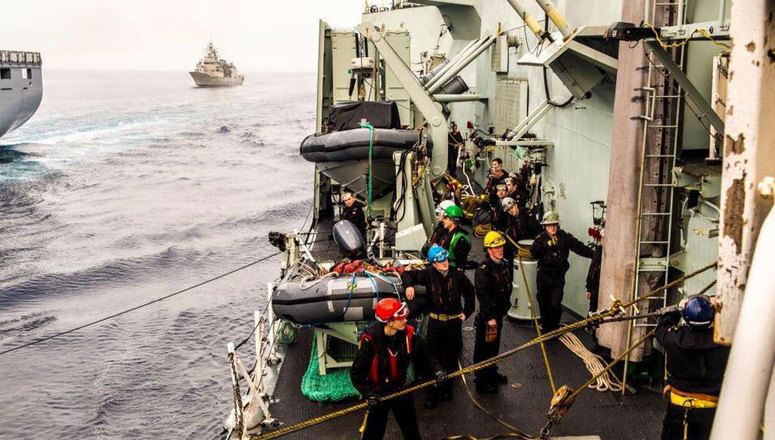But while Barack Obama dispatched Michelle to attend Nancy Reagan’s funeral memorial, he is going to a music festival.
North Korea Fires More Missiles into the Sea
VoA: South Korea’s military says North Korea has fired two short-range ballistic missiles into the sea, apparently a response to continuing military exercises by South Korea and the United States.
The South Korean Defense Ministry says the missiles were fired early Thursday morning from North Hwanghae Province. They traveled about 500 kilometers and fell into the water off the country’s east coast, officials in Seoul said.
Such firings are not uncommon when animosity rises on the Korean Peninsula. North Korea hates the massive military drills by Seoul and Washington, calling them a preparation for invasion.
Pyongyang also is angry about tough United Nations sanctions imposed following its recent nuclear test and long-range rocket launch.
North Korea has a large stockpile of short-range missiles and is developing long-range and intercontinental missiles.
The North fired six rockets into the sea last week, supervised by leader Kim Jong Un, who ordered his military to be prepared to launch pre-emptive attacks against its enemies.
On Wednesday, Kim said his country has miniaturized nuclear warheads to mount on ballistic missiles.
The U.S. State Department declined to comment.
****
Meanwhile Special Operations Command General Votel did comment:
NUMBER OF US SPECIAL FORCES ON KOREAN PENINSULA REACHES ALL TIME HIGH
US Special Operations Command General Joseph Votel stated that United States has increased the number of Special Operations Forces (SOF) on the Korean Peninsula in the past year-and-a-half to their highest level.
The United States has increased the number of Special Operations Forces (SOF) on the Korean Peninsula in the past year-and-a-half to their highest level, US Special Operations Command General Joseph Votel told the Senate Armed Services Committee on Tuesday.
“I am pretty proud to say, right now, today there are more SOF men and woman on the [Korean] Peninsula than we have had any time in the past,” Votel stated.
In the past two months, North Korea has engaged in multiple long-range rocket launches and a nuclear weapons test, raising concerns in the United States and among members of the international community.
Votel noted that the Special Operations Forces presence on the Korean Peninsula has increased over the past 18 months in partnership with South Korean forces.
The United States and South Korea just launched their largest ever military exercises in the region this week.
North Korea has argued the yearly exercises posed a threat to its interests, and announced last week that it had put its nuclear weapons on high alert, ready to carry out a preemptive nuclear strike.
Then Reuters has an additional report on North Korea’s newest nuclear weapons:
N.Korea’s Kim says country has miniaturized nuclear warhead
SEOUL, March 9 (Reuters) – North Korean leader Kim Jong Un said the country has miniaturized nuclear warheads to be mounted on ballistic missiles, the North’s KCNA news agency reported on Wednesday.
“The nuclear warheads have been standardized to be fit for ballistic missiles by miniaturizing them,” KCNA quoted him as saying as he inspected the work of nuclear workers, adding “this can be called true nuclear deterrent.”
The comments were Kim’s first direct mention of the claim previously made repeatedly in the country’s state media to have successfully miniaturized a nuclear warhead to be mounted on a ballistic missile, which is widely questioned.
Kim also inspected the nuclear warheads designed for thermo-nuclear reaction, KCNA said, referring to a hydrogen bomb that the country claimed to have tested in January.
North Korea conducted its fourth nuclear test on Jan. 6 and claimed it was a successful hydrogen bomb test, which was disputed by many experts and the governments of South Korea and the United States.
The U.N. Security Council imposed harsh new sanctions on the isolated state last week for the nuclear test, and Pyongyang has stepped up its belligerent rhetoric through state media.
Last week Kim ordered his country to be ready to use nuclear weapons at any time in the face of growing threats from enemies.




